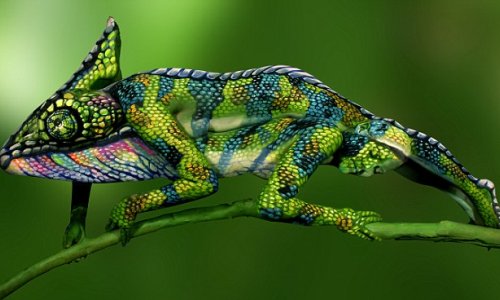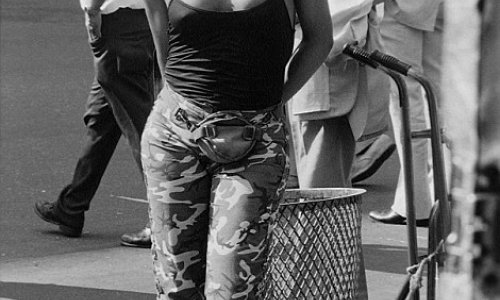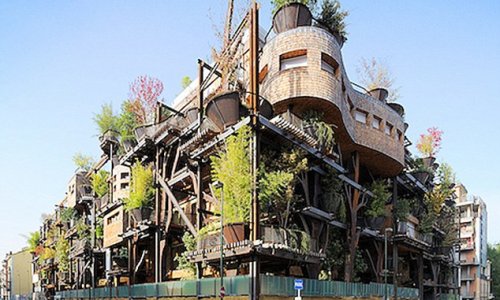Tod Papageorge, the American photographer, is one of these. And not only can he remember the club -- he has a collection of stunning pictures to prove it.
Now those pictures are being released in a new book, "Studio 54". The first edition has already sold out; a second "silver edition" will be available on 23 December.
"Like so many good things, my involvement with Studio 54 was a fluke," Papageorge tells CNN over the telephone from New York.
"My girlfriend at the time was a photographer, and had access to Studio 54.
"They asked me if I would be interested in photographing there, and who would turn that down? I was very lucky, and took advantage of it."
The coolest place on earth
In the late Seventies, Studio 54 was probably the coolest place on Earth. It was started by the socialites and entrepreneurs Steve Rubell and Ian Schrager, and was located at 254 West 54th Street in Manhattan.
The building had originally been a theater, which made for an impressive party space. And when the New York State Liquor Authority raided the premises a month after it opened for selling unlicensed alcohol, its reputation for glamor only increased.
Regular visitors included Elizabeth Taylor, Andy Warhol, Mick Jagger, Michael Jackson, Calvin Klein, Truman Capote, Cher, John Travolta, Tina Turner, Elton John and Salvador Dali. To name but a few.
"The place was like nothing I'd ever seen before," Papageorge recalls.
"It was an extraordinary situation, and I knew it wouldn't ever be repeated, even moment by moment.
"People around me were going crazy, basically, and I was trying to be passionate but remain cool enough to take pictures that would be clear and compelling."
A magical moment in history
The intensity of the place, Papageorge says, had something to do with the fact that everybody recognized that they were experiencing a brief moment of magic.
After all, in its original form it was only open for four years, from 1977 to 1981 (at the closing party, Diana Ross performed to an audience that included Richard Gere, Jack Nicholson and Sylvester Stallone).
"There was a communal recognition that this was thrilling, remarkable, unique," Papageorge says.
"They all recognized it. The dancers were dancing wildly, the celebrities were going into the secret rooms for cocaine or sex, and the general feeling was charged with the kind of electricity that you could never find anywhere else."
On one occasion, at a New Year's Eve party, four tons of glitter were dumped from the ceiling, forming a four-inch layer all over the floor.
The owner, Ian Schrager, compared it to "standing on stardust", though guests complained that the glitter did not leave their clothes for months.
"It sort of pooled on the balcony, and got into everybody's eyes," Papageorge recalls. "But I was so concentrated on what I was creating that I had a sort of force field that resisted the glitter."
On another occasion, a net holding gift boxes full of goodies from fashion houses was released above the crowd.
READ: Cocaine: A history of the once 'wonder drug'
The power of music
"To me, it was partly the music that set the scene," says Papageorge, "that throbbing disco beat. Partly it was the architecture of the place, it had very high ceilings and a special geometry. But mostly it was the people -- there were a lot of very beautiful and well-dressed people, particularly the women."
Indeed, Studio 54 was one of the most inaccessible nightclubs in the world. According to Papageorge, the owners wanted a "salad" of people in the club, comprising a mixture of the rich, famous, young and beautiful.
The doormen were charged with creating this combination, and they subjected every aspiring clubber to rigorous scrutiny. According to Papageorge, this was a "drawn out and difficult" process.
"People would wait outside for hours," he says, "waiting to be judged. The main doorman was Mark Benecke, who is now a radio presenter.
These days he's a very handsome middle-aged man, but back then he was a beautiful young man. By some standards only known by him and the other doormen, it was decided who would get into the club."
Once inside, however, everybody was equal. As Andy Warhol famously said: "The key of the success of Studio 54 is that it's a dictatorship at the door and a democracy on the dance floor."
(CNN)
ANN.Az





Follow us !











